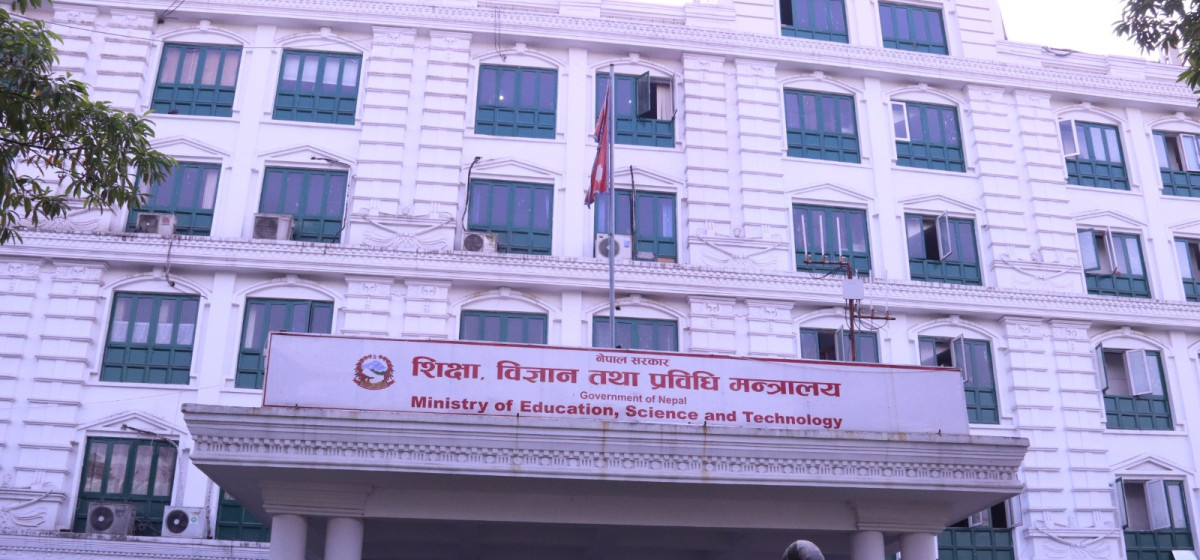KATHMANDU, June 3: Despite earning higher education within the country, many Nepali youths are compelled to remain either unemployed or accept jobs with very low salaries, leading to a frightening surge in youth migration abroad.
In the past seven years alone, nearly Rs 500 billion has flowed out of the country as young people seek better education and opportunities abroad.
According to data from the Ministry of Education, Science, and Technology (MoEST) and Nepal Rastra Bank (NRB), a total of 543,833 Nepali students received a No Objection Certificate (NOC) for foreign study between the Fiscal Year (FY) 2018/19 and the mid-March 2024/25.
During this period, a staggering Rs 493.09 billion has been spent in the name of higher education in foreign countries, as reported by the NRB. This figure does not include students going to India or the expenses incurred there, since an NOC is not required for study in India.
It is estimated that billions of rupees also flow to India each year for higher education. However, the government does not have concrete data on this, as students do not require a No Objection Certificate (NOC) to study in India.
Why is an "NOC" required while going abroad for higher educatio...

According to available statistics, the highest number of students went abroad in the FY 2023/24. That year, 112,968 students obtained NOCs, resulting in an outflow of Rs 125.13 billion.
Surprisingly, even during the global panic caused by the COVID-19 pandemic in the FY 2019/20, a total of 33,196 students went abroad with NOCs. That year, Rs 25.81 billion was spent on foreign education.
According to education experts, Nepali youths are compelled to go abroad due to several domestic issues such as delays in completing academic programs, slow publication of results, frequent closures of universities and colleges, and unnecessary interference by student unions affiliated with political parties.
Education expert Kedar Bhakta Mathema states, “The main reasons Nepali youth go abroad are education and employment. Until we strengthen our industries, factories, businesses, and the tourism sector—and connect agriculture with industry—our youth will not be willing to stay in the country.”
He expressed sorrow over the collapse of garment industries in Nepal, citing Bangladesh as an example of a country that has achieved economic progress through the same sector. “In neighboring India, educational institutions ensure employment opportunities alongside studies. But in Nepal, universities and colleges merely teach without making learning practical or striving to provide job placements,” said Mathema.
Hari Singh KC, a central member of the Education Department of the Nepali Congress, also stated that due to political instability, lack of employment opportunities matching students’ education, and low wages, youths are forced to seek foreign education. “Although the government introduced a 'study and earn' policy, it failed to create an environment to support it,” KC remarked.
According to Prof Dr Ammaraj Joshi, former Vice-Chancellor of Sudurpaschim University, the political control and lack of autonomy in Nepal’s universities have increased students’ disinterest toward Nepali education.
“Although there is a high number of student enrollment in Nepal, many do so only as a temporary measure until they get opportunities abroad. They seek opportunities in subjects offered domestically but eventually find ways to go abroad,” Joshi stated.
He added that the examination system conducted only at the end of the year does not improve learning outcomes. Therefore, he emphasized the need to adopt a continuous assessment-based teaching method and focus on improving educational, administrative, and physical infrastructure.
Currently, Nepal has 16 universities, 7 health science institutes, and several campuses affiliated with foreign universities, with a total of 672,489 students enrolled. Among them, 74.31 percent study at Tribhuvan University.
The ongoing trend of youth migration abroad and the large outflow of capital is certain to have long-term impacts on the country’s educational, economic, and social sectors. To stop this, there is an urgent need for the government to introduce concrete policies and programs immediately.





































